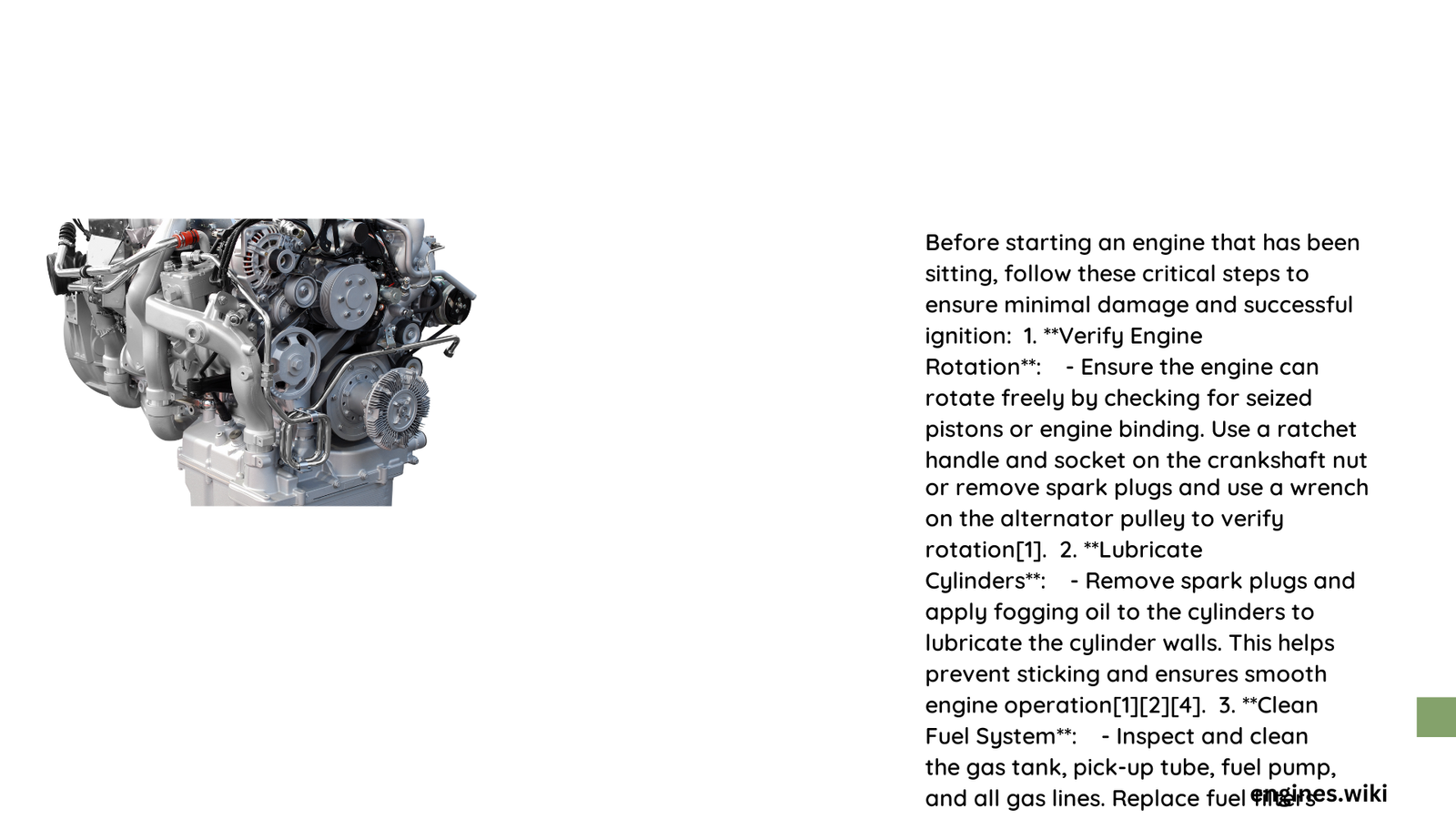When an engine has been dormant for an extended period, restarting requires meticulous preparation to prevent potential mechanical damage. Neglecting proper pre-start procedures can lead to catastrophic engine failure, costly repairs, and unexpected breakdowns. This comprehensive guide provides expert-level insights into systematically evaluating and preparing your vehicle’s critical systems before turning the key, ensuring a safe and smooth engine restart after prolonged inactivity.
Why Proper Preparation Matters Before Engine Restart?
Engines left stationary for weeks or months develop complex mechanical challenges that demand careful assessment. Fuel degrades, lubricants settle, seals dry out, and electrical systems lose charge. Understanding these potential issues is crucial for preventing irreversible damage during restart.
What Happens During Extended Engine Dormancy?

| System | Potential Issue | Risk Level |
|---|---|---|
| Fuel System | Fuel oxidation | High |
| Battery | Charge depletion | Medium |
| Lubrication | Oil breakdown | High |
| Cooling System | Coolant contamination | Medium |
How to Inspect Fuel System Before Restart?
Fuel Quality Assessment
- Examine fuel color and clarity
- Check for sediment or contamination
- Smell fuel for unusual odors
- Use fuel stabilizer if stored over 30 days
Fuel Line and Filter Evaluation
- Inspect fuel lines for cracks or damage
- Remove and clean fuel filters
- Drain old fuel if stored longer than 6 months
- Consider professional fuel system cleaning
What Battery Checks Are Essential?
Voltage and Condition Verification
- Measure battery voltage using multimeter
- Ideal voltage range: 12.4 – 12.7 volts
- Clean battery terminals
- Check for corrosion or buildup
- Charge or replace if voltage below 12.4V
How to Evaluate Engine Oil?
Comprehensive Oil Analysis
- Check oil viscosity and color
- Look for contamination signs
- Measure oil level accurately
- Consider complete oil replacement
- Inspect for water or metal particle contamination
What Coolant Precautions Should You Take?
Cooling System Diagnostic Steps
- Verify coolant concentration
- Check for leaks or corrosion
- Ensure proper fluid levels
- Test coolant pH levels
- Inspect radiator and hoses for damage
Additional Preparatory Recommendations
Pre-Start Mechanical Checks
- Manually rotate crankshaft
- Check for seized components
- Lubricate key moving parts
- Inspect belts and hoses
- Verify all fluid levels
Electrical System Preparation
- Check spark plug condition
- Verify ignition system integrity
- Test starter motor functionality
- Examine wiring for corrosion
Critical Warning Signs
Do Not Start Engine If:
– Significant fuel contamination exists
– Battery voltage is critically low
– Oil shows severe degradation
– Coolant system has major leaks
– Mechanical seizure is suspected
Pro Tips for Safe Restart
- Always perform comprehensive system checks
- Use fresh, high-quality fluids
- Take restart process slowly
- Monitor engine performance closely
- Consider professional inspection if uncertain
Recommended Tools
- Multimeter
- Socket set
- Oil analysis kit
- Fuel testing equipment
- Battery charger
- Flashlight
- Protective gloves
Final Precaution
Patience during restart preparation prevents expensive repairs. Methodical assessment ensures your engine’s longevity and performance.
